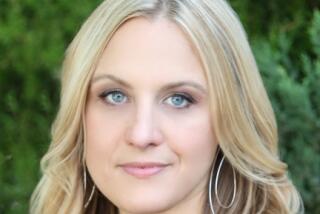Change fuels America’s faithful
- Share via
LAST MONDAY, President Bush sought to revive his flagging support among religious conservatives by endorsing a proposed constitutional amendment to ban same-sex marriage. In his remarks to a group of evangelical activists, the president portrayed supporters of the amendment as defenders of tradition. Yet, ironically, the strength of Christian conservatism in the U.S. derives less from deep roots in tradition than it does from America’s uniquely unrooted and fast-changing culture. We are the most churchgoing Western nation -- 43% of Americans attend religious services at least once a week -- precisely because we are the least traditional.
How can that be? It’s because when it comes to religion, tradition can breed nonchalance, while change breeds devotion.
Scholars have long observed that migrants to the U.S. tend to become more religiously observant here than they were in their countries of origin. Historically, increased participation in churches and synagogues has provided people who’ve left behind family and native country with the faith, discipline and community with which to endure the many changes and uncertainties in their new lives.
At the turn of the 20th century, Jewish immigrants observed rituals such as reciting the kaddish (a mourner’s prayer) more frequently in America, where their future was still in question, than they had in Europe. After Italian immigrants arrived in America, they turned what had been a folk Catholicism that revolved around hearth and home into a much more church-centered faith. A strong organization of ethnic parishes then helped them meet the social and psychological needs of an impoverished and isolated minority. Similarly, rates of church attendance are higher for contemporary Mexican immigrants in the U.S. than they are for their cousins back in Mexico.
The religious historian Timothy L. Smith called migration a “theologizing experience” -- an event that urges an individual to find meaning in his life. Indeed, changes of location and social milieu can unsettle our self-conception at the most fundamental level. Far away from the social roles and constraints of their places of origin, newcomers need an anchor -- networks and institutions. And so they often looked to religion to ground and guide them in an alienating cultural landscape.
The great domestic migration of the second half of the 20th century -- the move to the suburbs -- had similar religious consequences. Just as immigrants felt a need to create meaningful networks and institutions in order to survive the transition to their new homes, so did millions of internal migrants.
In the 1940s, scholars found that the erosion of old values -- from the city and the farm -- was creating suburban culture shock. In 1956, William H. Whyte Jr. found that rootless suburbanites were obliged to emphasize what others historically had taken for granted. “Stability, kinship with others -- they want these demonstrated, and in the here and now,” he wrote. The result was a religious revival.
CHURCH membership reached an all-time high in the 1950s, and the U.S. experienced the greatest church-building boom in its history. Today’s nondenominational megachurches, many of them conservative and evangelical, are just the latest version of the trend.
It’s because we’re still not sitting still. As typical Americans, the folks in those churches will probably change their residences 11 times and switch jobs 10 times in their lives. A third of those who marry will divorce. (According to a survey by the Barna Research Group, “born-again Christians are just as likely to get divorced as are non-born-again adults.”)
And just as the lack of rootedness fuels churchgoing, so does the nation’s secular tradition. Although many religious conservatives grouse that the separation of church and state excludes them from the public square, it is another source of our nation’s religious vitality. As Thomas Jefferson predicted in 1776, the “disestablishment” of religion would invigorate the church because it would “oblige its ministers to be industrious [and] exemplary.” In other words, without government backing, U.S. congregations have had to rely on their spiritual strength to survive.
On Wednesday, the Senate rejected the constitutional ban on same-sex marriage. And though they might not see it this way, it’s a good thing for evangelical activists. Because the moment the government codifies a church-driven public policy initiative in the Constitution is the moment that America’s religious vitality will begin to decline.
More to Read
Sign up for Essential California
The most important California stories and recommendations in your inbox every morning.
You may occasionally receive promotional content from the Los Angeles Times.












